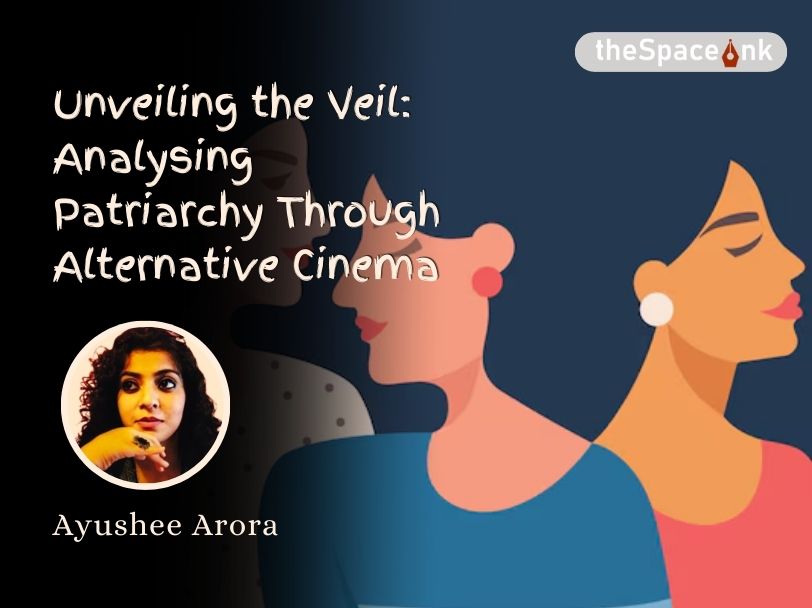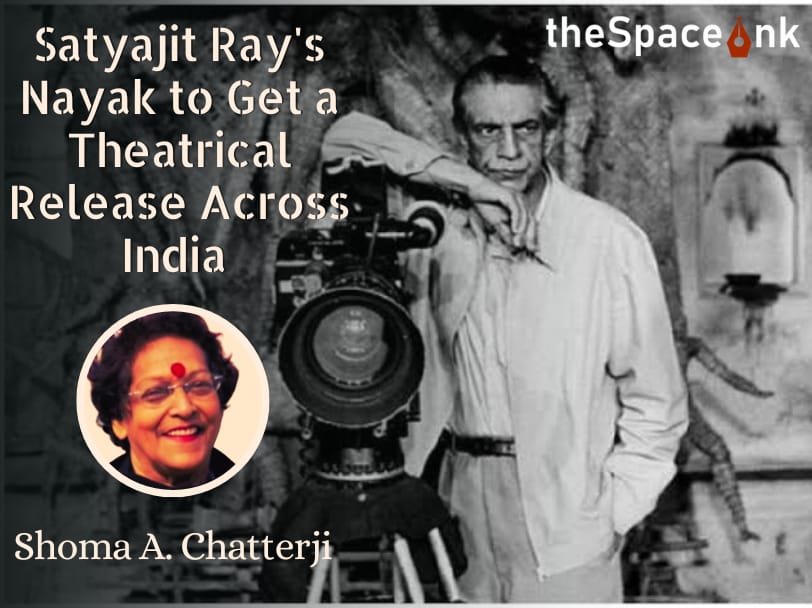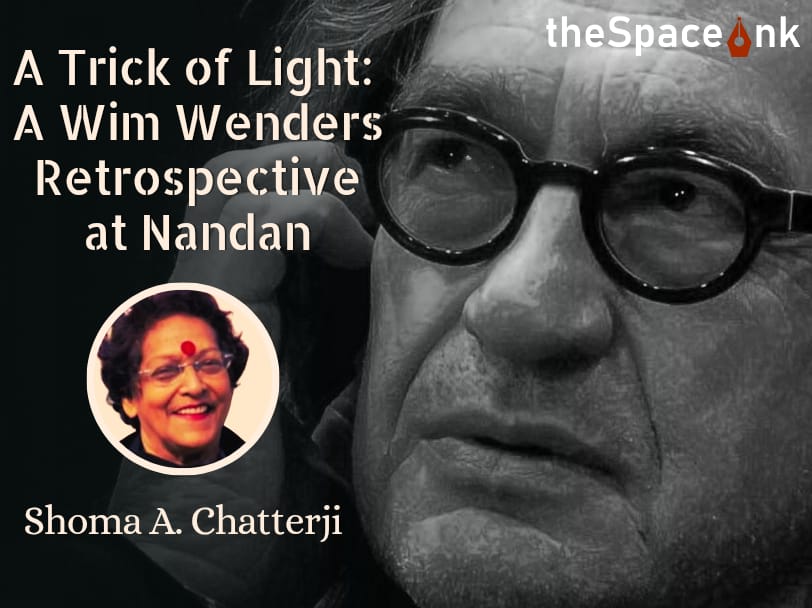In 1858, a classical play ‘Ratnaboli’ was staged in the Belgachia Theatres of north Calcutta, which for the first time had a ‘native’ orchestra in its accompaniment. Kshetramohan Goswami (pronounced Khetramohan in Bengali), a “genius in music” had “for the first time put into notation some of the native tunes and ragas” and created a native Band “Belgachia Amateur Band”. This “Amateur Band” which Goswami had put together at the request of the Rajas of Paikpara was an “ensemble of native musicians who read their tunes from notation” and played “in the Western manner.”
Also read: Raja Rammohun Depicted in Bengali Cinema
Kshetramohan Goswami (1813-1893) was one of the first-generation musicians of Bishnupur, who trained under Ramshankar Bhattacharya (1761-1853), one of the “founders” of the Bishnupur gharana. Kshetramohan came to Calcutta and remained under the patronage of the Pathuriaghata Tagores and mentored many of Sourindro Mohun Tagore’s musical projects. His hometown Bishnupur was known for its Sanskrit scholarly roots and established a distinctive repertoire and musical style with local Hindu practitioners. The musical legacy of Bishnupur court “resembled” the Mughal court of Delhi and had established itself as the “second Delhi”. With the coming of Bahadur Khan, a “descendent” of the Tansen family, to the Bishnupur court, the north Indian court music genre of Dhrupad entered Bengal and the “Senia” repertoire (related to Tansen family) became a stylistic identity of the Bishnupur musicians.
Kshetramohan Goswami’s arrival in Calcutta had a significant impact on the musical milieu in the city, which began with his setting up of aikatan (“orchestra band”) and culminated in the establishment of Bengal Music School, the first formal music school in India established in 1871, to teach vocal and instrumental music. The Bengali Theatre had already begun adopting elements of English public theatre, which included live music orchestration. This particular development initiated by Kshetramohan had important consequences for the beginning of modern techniques of writing music. The musical notation which he had initially devised for synchronizing a band of musicians and the production of music itself, later on, became an important pedagogic tool that he used for teaching music at the Bengal Music School. The swaralipi devised by Kshetramohan Goswami, which later on came to be known as the dandamatrik swaralipi due to the usage of particular sign systems, turned out to be the earliest notation system that facilitated reading, learning and playing/singing music from the book.
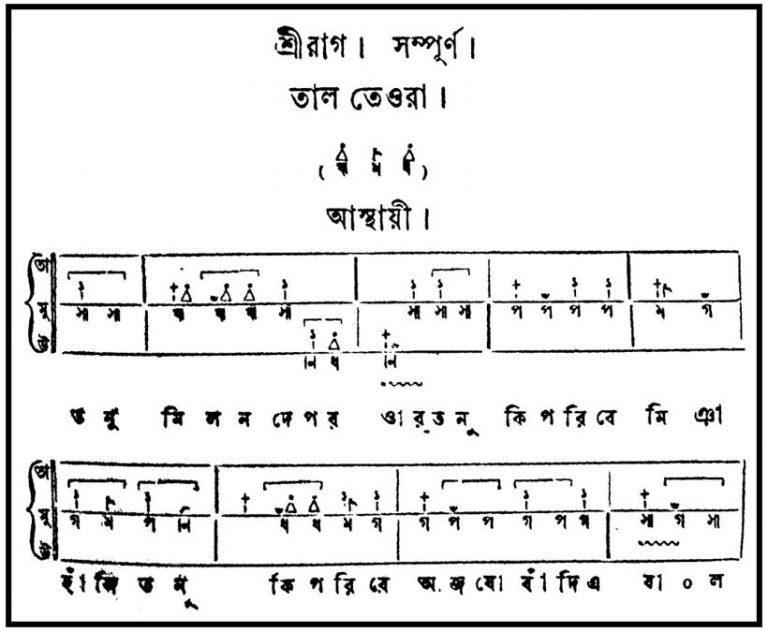
Kshetramohan was probably the first musician from Bishnupur to write and publish books in Bangla that were aimed to help students with music learning. Two of his most important pedagogical works were replete with swaralipi for a massive number of compositions meant for sitar and vocal music students respectively. KshetramohanGoswami’s Sangeeta Sara (1869), a “treatise of Hindoo music,” was the first “complete” music book bringing together the vital components of musical knowledge in a single compendium – a synthesis of textual knowledge of music theory and practice along with a massive repertoire of instrumental music that could potentially be rendered into actual performance. Sangeeta Sara, clearly demarcated music theory and practice: the first part of the book deals with the aupapattika taurjyatrika (theory of taurjyatrika, the three arts of dance, drama and music), and the second part kriyasiddha taurjyatrika (practice of taurjyatrika). The kriyasiddha contains numerous notated music pieces, firstly, to enable the students master their instrument through a series of systematic practices (sadhan pranali), and eventually ‘perform’ the rest of the notated music pieces, containing two-part alaps (divided into asthayi and antara) for eighty-six ragas, which, in the contemporary understanding, are free explorations of the melodic framework of the raga before the beginning of the rhythmic composition.
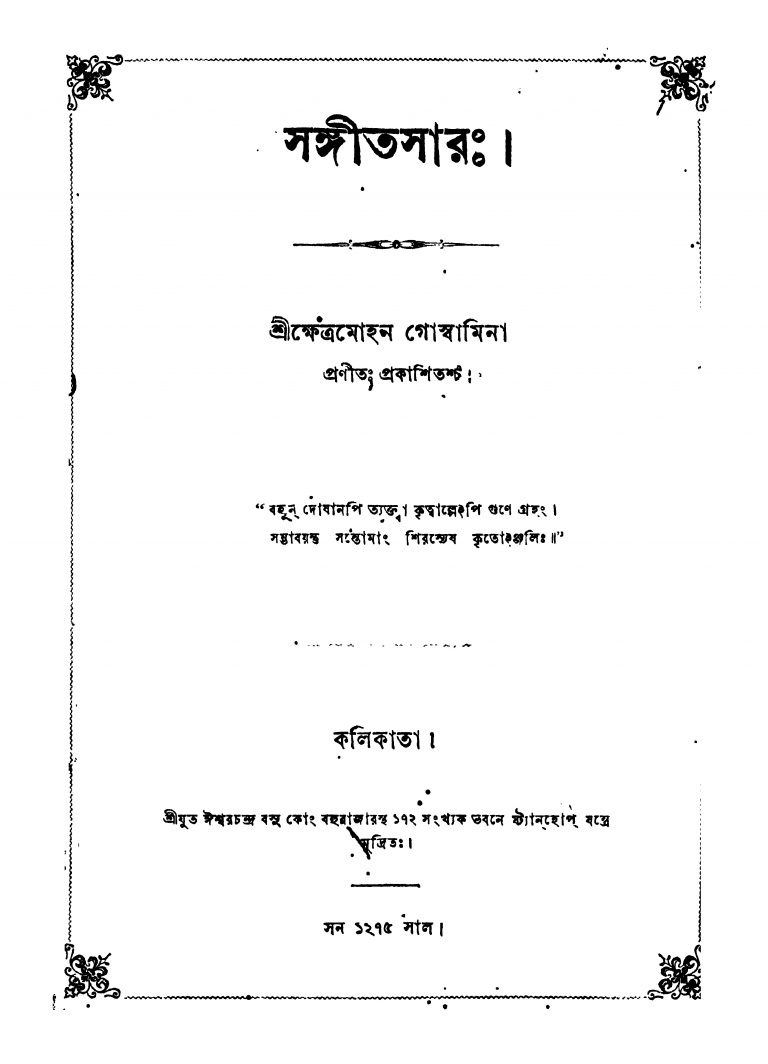
Kshetramohan’s adoption of the swaralipi, as a “modern improved system of Hindu notation,” was aimed to standardize the musical pedagogy and its repertoire. The notation was the only way to “revive” and “preserve” what is “pure”, the shuddha form of the raga, which, in the absence of “writing,” had become ashuddha (impure) due to inaccurate transmission continuing through several past generations. The only way to achieve “purity” of the raga, according to Kshetramohan, was then to “fix” them through the swaralipi so that they are performed uniformly across time and space and exactly as intended by the author.
Kshetramohan Goswami’s arrival in Calcutta had a significant impact on the musical milieu in the city, which began with his setting up of aikatan (“orchestra band”) and culminated in the establishment of Bengal Music School, the first formal music school in India established in 1871, to teach vocal and instrumental music.
In the most elaborate Gita Prakarana of his second book Kantha Kaumudi, Kshetramohan gives a detailed overview of various forms of raga-based vocal music illustrated with musical examples, concluding with a section which includes swaralipi of two hundred fourteen songs set to one hundred ragas arranged chronologically according to their “prescribed” time of performance encompassing the entire daytime. All the songs in this section belong to either dhrupad or kheyal as apparent from the song structures and tala indications. Among the fourteen different categories of raga-based vocal music, Kshetramohan’s particular focus on these two categories of vocal music is clearly indicative of their popularity and demand among his target audience. Kshetramohan’s attempt was to disseminate a massive repertoire of raga-based music of upper India particularly for a non-Hindi speaking Bengali music enthusiasts so that they could train themselves to become performers of dhrupad and kheyal, a form of music which was yet “alien” to them. The list of ragas includes twenty-six-morning ragas, thirteen-afternoon ragas, thirty-four evening ragas, twenty-seven late night and early morning ragas with an additional nine ragas suitable for performing at any time of the year.
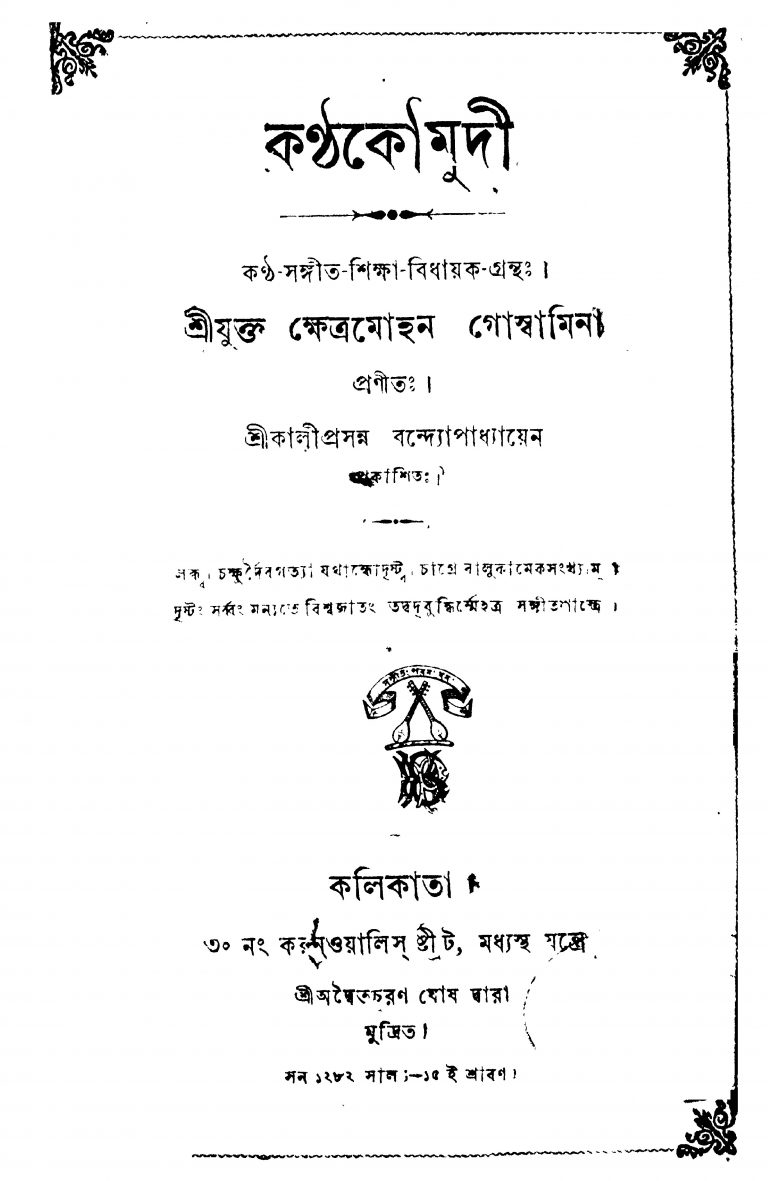
Kshetramohan designed his swaralipi with three vertically arranged horizontal lines representing three octaves together denoting a stabaka (stave). The three horizontal lines denote three saptaks (octaves), which together represent the entire tonal range of Indian vocal and instrumental music. Kshetramohan’s “improved” design of the swaralipi not only enabled the “reading” of music from the page, but it also became a real-time visual “guide” for imagining musical movements while attempting to sing them simultaneously. Kshetramohan insists on visually indicating to the reader the octave-changes or the “level shifts” in the melody while the notes move up and down the three tiers. Musical embellishments are indicated as annotations by predefined symbols placed on top of the notes. For any student of music, the “reading” of this notation was indeed a complex mental operation that had to be mastered – yet, this was a beginning. In today’s world, where printed music books have become a standard in musical pedagogy across India, one needs to know that it had its beginnings in the mid-nineteenth century Calcutta, with the efforts of Kshetramohan Goswami!
References:
- Capwell, Charles. “Musical Life in Nineteenth-Century Calcutta as a Component in the History of a Secondary Urban Center.” Asian Music 18, no. 1 (1986): 139-63. doi:10.2307/834162.
- Ghose, Loke Nath. The Music and Musical Notation of various Countries. Calcutta: J.N. Ghose & Biswas, Printer Presidency Press, 75 Bentinck Street, 1874.
- Gosswamee, Khettra Mohana. Sangeeta Sara Or A Treatise on Hindoo Music, In Two Parts. Calcutta: Printed for the Author and Publisher by I.C. Bose & Co., Stanhope Press, 249, Bowbazar Road, and by Mothuranath Turkarutna, Prakrita Press, 2, Holwell’s Lane, Mirzapore, 1869.
- Goswamin, Khetra Mohana. Kantha Kaumudi or A Guide to Vocal Music Calcutta: Printed by Audayto Churn Ghose at the Madhyastha Press, No.30, Cornwalis Street, 1875.
- Bandyopadhyay, Ramesh Chandra. Dwitiya Dilli Bishnupur. Kolkata: Satishchandra Mukherjee, 1348 BS (1942).
- Capwell, Charles. “The Interpretation of History and the Foundation of Authority in Vishnupur Gharānā of Bengal.” In Ethnomusicology and Modern Music History, eds. Stephen Blum, Philip Bohlman and Daniel M. Neuman. Urbana and Chicago: University of Illinois Press, 1991.
- Williams, Richard David. “Hindustani music between Awadh and Bengal, c.1758-1905.” PhD diss., King’s College London, December 2014.
A vocalist of Patiala Gharana and a scholar.




